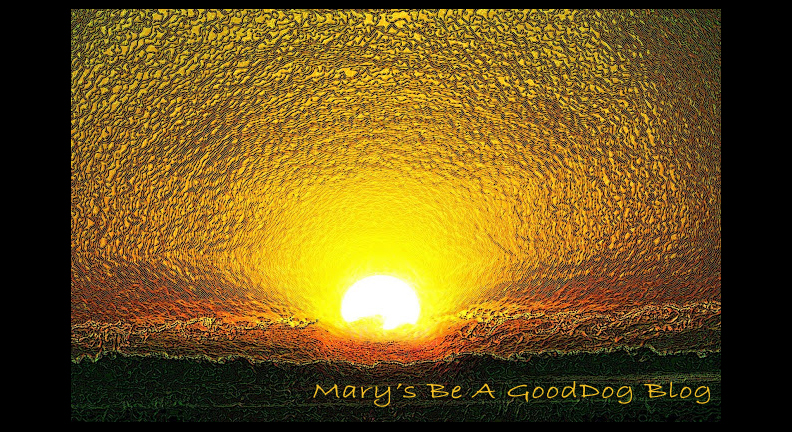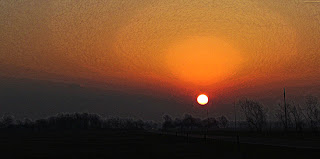At 10 a.m. on day four of the capital murder trial of Luis Aguirre, the prosecution intended to bring in an expert witness regarding the findings at the grave site.
This
expert witness was the focus of the court for the rest of the day. The defense team decided to argue to the court that the testimony of this witness should not be allowed to be given/admitted. So the jury was not in the room when the arguments took place.
Eventually, Judge Wilson ruled that the Botanist could testify.
Dr. A. Spencer Tomb
Kansas State University Division of Biology
Dr. Tomb had received his PhD. in 1970 from University of Texas in Cytogenetics. At KSU his focus is on "systematic botany; evolution of flowering plants, cytogenetics,
and palynology. Betcha don't know what that means.
Wiki say, Palynology is defined as "the study of microscopic objects of macromolecular organic composition (i.e. compounds of carbon, hydrogen, nitrogen and oxygen), not capable of dissolution in hydrochloric or hydrofluoric acids."[2] It is the science that studies contemporary and fossil palynomorphs, including pollen, spores, orbicules, dinocysts, acritarchs, chitinozoans and scolecodonts, together with particulate organic matter (POM) and kerogen found in sedimentary rocks and sediments. Palynology does not include diatoms, foraminiferans or other organisms with siliceous or calcareous exoskeletons.
Palynology is an interdisciplinary science and is a branch of earth science (geology or geological science) and biological science (biology), particularly plant science (botany). Stratigraphical palynology is a branch of micropalaeontology and paleobotany which studies fossil palynomorphs from the Precambrian to the Holocene.
For a list of Dr. Tomb's published writings:
CLICK HERE. He particularly studies sunflowers.
OK, so the first thing RCPD investigations wants to do after the discovery of human remains, is determine the who what where when, eventually why.
As i mentioned earlier, but for the fortuitously preserved fingerprint, which survived many things including animal activity, the "who" might have been difficult if not impossible. Eventually, i suppose, a missing woman and son report and other factors could have led to probable identification. But decomposition, when assisted by animal activity, may well have eliminated all remains within a fairly short period of time.
The night the criminal activity was discovered, detectives wanted to know how long the grave had been there. Someone, Detective Ratiger, i think, thought to call on K-State's Dr. Spencer Tomb, who had assisted RCPD a few times in the past in more minor criminal cases. The point of calling in Dr. Tomb was specifically to assist in dating the grave site. Since it was now mid-late October, and there had clearly been animal activity and the passing of time since the bodies had been buried, the movement of the seasons offered clues to this question. Mid-September through late October in fact would be rich in timeline clues since this is the summer -to -autumn moment, with its frosts, freezes, leaf fall, etc.
Dr. Spencer Tomb arrived at the scene and began to make observations. The defense on cross-examination hit him hard about not taking notes. I understand this, but i also know that simple quiet observation is the key to insight and aha moments.
I recall, when learning the science of therapy,
the real Art of it came to me in a zen koan:
As the roof was leaking, a Zen master told the two monks to bring something to catch the water. One brought a tub, the other a basket. The first was severely reprimanded, the second highly praised.
That is, one must listen quietly.
One must allow the rhythm of reality to wash over one, to join with what the truth is without words, rather than try to collect, hoard, detail each and every--- oh, you know what i mean.
OK interruptions abound. i post, but shall return to this post later to expand.

So, after lunch
the jury came back into the courtroom. Dr. Tomb's credentials were described. Dr. Tomb is loquacious and humorous, and i think the jury got a good sense of the man as a truthful, thoughtful individual with a great deal of knowledge regarding botany. He is currently working on a book for children, to increase their interest in plants. When a question was asked, "What is a plant?" Dr. Tomb mentioned that a plant is AUTOTROPIC--capable of making their own energy [e.g., turning sunlight and inorganic materials into nutrient life for themselves] which i have always found very cool and mysterious.
(The defense on cross asked rather snarkily whether he had training in CSI? Had training in analyzing crime scenes? Of course, is this typically asked of say, expert witnesses in psychology or PTSD? They asked, have any of your publications involved crime scene analysis?-he answered, 'Not Yet'. heh.)
Dr. Tomb testified
that he walked about the burial site, first right under the Box Elder trees which formed a canopy over the grave, then continued out further and further into the soybean fields. He noted the variety of plant life and the effects of the fall weather.
The defendant watched this witness, more than any other. He had rarely looked up during the trial. He seemed to hang on every word of Dr. Tomb.
Dr. Tomb discussed the "borrowed dirt" that is left behind when someone fills a hole back in again, and how all the dirt cannot be replaced, He discussed the
Broam grass that surrounded the grave and how some of it remained under chunks of dirt, the tops dry but the bottom still green with chlorophyll. He spoke about Box elders, how they are not anyone's favorite tree but they do withstand drought and so have been planted all around the world. He told the story of being near the
Mongolian border (can you say 'siberia') with some Russian botanists out in the field and lo and behold-the single tree visible was "An old friend from home"-the Box elder. (This made the jury smile, even Sleepy man in the back; even Intense Girl, my favorite juror, was sleepy today.)
 |
| Dr. Spencer Tomb and his Golden |
The testimony was that the grave
had been dug recently,
perhaps 4-6 weeks.
He indicated this to the detectives on October 26-27 2009. Luis Aguirre had brought Tanya and Juan Maldonado to his Ogden apartment on September 21, 2009. (full story in the
Manhattan Mercury here. by Katherine Wartell).
So-this gave detectives a good start in constructing a timeline.
However, Dr. Tomb observed something else. Leaves do various things, like "crinkle" when there is a light frost. Hard freezes, drought, early dropping, etc. are the stuff his expertise is made up of--and as Dr. Tomb was examining the area of the grave right up next to the bodies, which were not yet removed, something caught his eye. Under the body of Tanya Maldonado, there appeared to be just peeking out, flat leaves. Leaves that had been unaffected by freeze or frost. In fact, there seemed to be, perhaps, layers of flat leaves.
Working with investigations, Dr. Tomb obtained several samples of the mud/leaf layer which had remained undisturbed beneath certain parts of the body of the deceased. Spencer Tomb took these samples and through analysis--including a turn of fortuitous serendipity which he will no doubt publish in a journal-- determined that there had been significant leaf fall into the grave before the bodies were laid inside. At least 12 hours, perhaps 4-5 days must have passed between the digging of the shallow grave and the laying of the bodies.
Obviously, this directly contradicts the testimony of the accused that the grave was hastily dug and the victims immediately laid inside. Dr. Tomb had a detailed powerpoint presentation he used to explain the findings to the jury. There appeared to be at least three layers of the flat leaves under the bodies.
Mother Nature tells the truth.





















































 So, after lunch
So, after lunch
